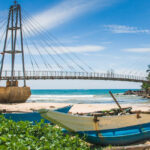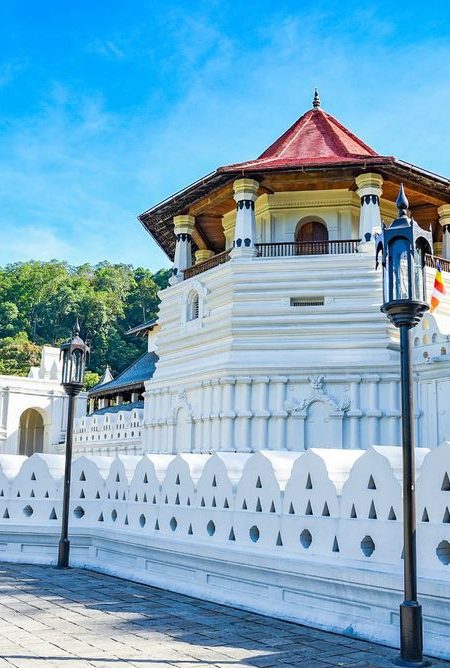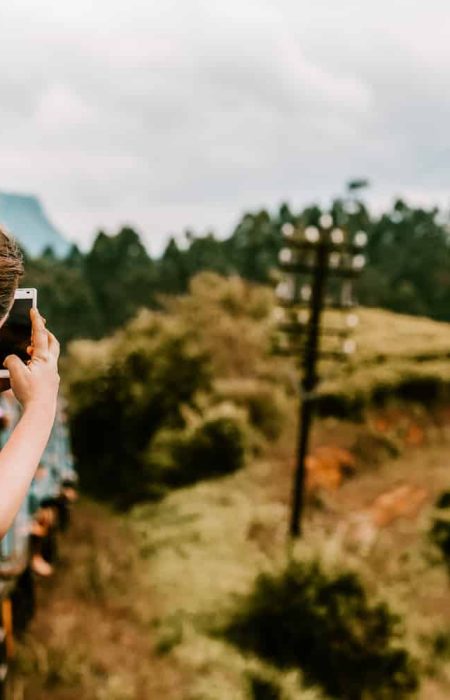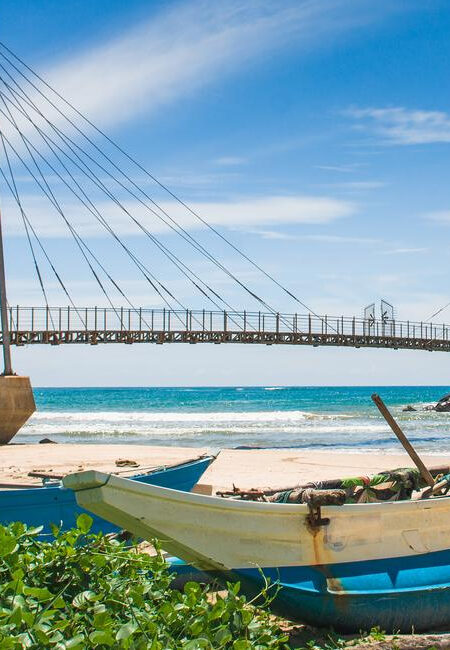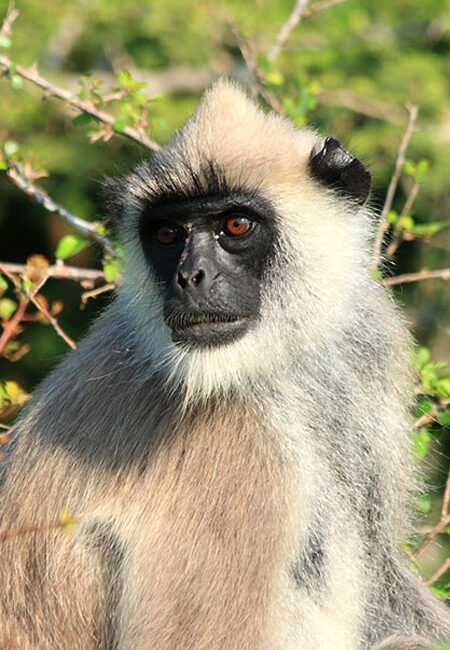Discovering Sigiriya Rock: Sri Lanka’s Majestic Fortress
Imagine a huge rock fort created almost 200 meters above the surrounding landscape with gardens, ancient ruins and breath taking views. This is Sri Lanka;s most famous landmark: Sigiriya Rock. Sigiriya, also known as ‘the Lion Rock espectacularly shoots lights at everything’, is a UNESCO World Heritage Site, and the history and legends on it and everything else mindblowing about it pulls in all the visitors. In this article, we’ll continue to speak about the wealth of history behind someplace like Sigiriya Rock, when exactly you should be going in order to make the most of it, and tips on how to get the best of the place.
- Sigiriya Rock from its historical perspective.
Sigiriya Rock history dates back to 5th century. This was the Royal Citadel of King Kasyapa who had once turned this massive rock to become an impregnable hellish citadel. This was central to a new king building his palace on top of the rock and filling it full of lush gardens, ponds and beautiful frescoes. These remains told us something about the history of Sri Lanka.
King Kasyapa recognized that Sigiriya was naturally a place of defensive advantages, and so chose a site for his capital at Sigiriya. As an ideal fortress it was, and as a natural moat in which the rock sat, it was. The king had a dream for this as a paradise on earth and offered this vision. The palace complex included the water gardens, terraced gardens and elaborate painting.
In terms of the site, sigiriya frescoes are one of the most important manifestation of the site. About halfway up the rock are these abstract nudes in bright colours. The are wonderful art, wonderful ancient Sri Lankan art, attesting to the art of the day. An interesting one more feature of the Mirror Wall, because when it was so polished that the king could see his reflection. It is today covered in ancient graffiti to the 8th century.
- Climbing Sigiriya Rock: What to Expect
The climb of Sigiriya Rock in itself is an adventure. There are many staircases and pathways from which one must pass to reach the top, and even sometimes, the rock is carved into the ways. It’s not a hard walk up, it’s just a work out to get to the rewards. On the Sigiriya path itself, there are a few points which will have your view of history, beauty, and Sigiriya altogether different.
But climbing stairs goes up, through the terraced gardens of the rock base. Which were marvelous ancient engineering, with very carefully devised water features and highly evolved irrigation systems. The next stop is your climb and the Boulder Gardens are crazy busy with giant rocks, skillfully sculpted into curious shapes. Minister mayhu said the rocks that formed the palace’s outer defenses were once a part of him.
Thus you’ll come to the Sigiriya frescoes. It has a canopy so paintings are under, from a spiral staircase. To see this up close is a highlight of the climb. Here you are led through to the Lion’s Gate, known as a grand entrance, for which the lion’s huge paws were carved into the rock. The full lion sculpture formerly boasted fangs, but no longer does.
As one of the climb, it is the hardest of the hardest, through steps steep and hidden inside narrow paths. The view gets better and better heading up to the summit. After all that effort, we make it to the top of Sigiriya Rock and on to the ruins of King Kasyapa’s palace at the endpoint of this.
- Summit Spectacular Views
Climbing to the top of Sigiriya Rock reaches reward. At the top we have the remains of King Kasyapa palace with the throne, swimming pools and gardens. The main highlight here however is the panoramic view of the surrounding countryside. From here you can see lush forest, close mountains, vast plain of Sri Lanka etc.
At Sigiriya you can see that it was a strategic point as a fortress. It contrasts lovely lush greenery with ancient ruins. That wind up top is refreshing, furthered by the ‘after’ piece that makes it all worthwhile.
- Sigiriya Rock: Mysteries and Legends.
Sigiriya Rock is just a place of rubbishes and mysteries for no other reason than it is historical. King Kasyapa, the tale of whose building of fortress is one of the most interesting, built the fortress so that it was for the king to take care for himself against whom he committed an error. According to rumors, Kasyapa murdered his father King Dhatusena, abducted the throne. The brother had come to get his retribution on the rightful heir and Kasyapa feared his brother’s wrath and fled to Sigiriya to turn it into a fortress and a sort of a priesthood.
The story of power, betrayal, tragedy, Sigiriya. However, Kasyapa ended his battle disastrously, in 495 AD, with the army of his brother. Kasyapa took his life when he imagined his troops had deserted him. After his death Sigiriya was deserted, then it became a Buddhist monastery.
There are other legends that tell that Sigiriya was that place where Alakamandava, city of the gods, once stood. Some believe Sigiriya fits this description: the ancient texts to which the words refer is a palace in the sky. That, along with the depth of intrigue of Sigiriya Rock, adds yet another layer into that mix of historically attested and mythical tales.
- Intriguing Sigiriya Rock – The Engineering Marvels
Sigiriya Rock is not only a mystic and the place of history sites, but also a unique engineering feat. To put it all in such a compact urban pile on a massive rock which is Sigiriya was a marvel of structural engineering on the part of the ancient builders of this place. Water management systems are intricate, architecture techniques are advanced and artistic innovations are present in the site.
Sigiriya water gardens are awesome. All these ponds, fountains and moats are symmetrical, and a complex system of pipes and channels links them. This is well advanced hydraulic engineering and to this day the fountains still work during the rainy season, which proves that ancient Sri Lanka’s hydraulic engineers were well advanced.
One of the site’s inventiveness is the terraced gardens. When these gardens were built on a sequence of terraces rising up from the rock, the design of these gardens included natural rock formations. Not only were the terraced slope ones with aesthetics but the drainage and erosion control it provided were practical benefits among the Mughals.
Indeed, Sigiriya’s builders reached technical and artistic peaks in the building of the Mirror Wall, which – like so much at Sigiriya – was polished in a mix of lime, egg white and honey. One early use of a material to help augment architectural beauty is one early use of a material as a reflective surface for a wall.
- Sigiriya Rock – Its Cultural Significance
Sri Lanka’s Sigiriya Rock is culturally monumental. It is a symbol of proud heritage of the nation and is the token of the talent and imagination of the country’s ancient folk. This site is clearly a cultural treasure which joins together historically, architecturally and artistically to continuously attract and inspire the attention of visitors.
Through the frescoes, Sigiriya managed to be one of Sri Lankas important artistic legacy. The ancient Sri Lankan art depicted these paintings are masterpieces of graceful figures of women. The colors used are suggestive of high artistic skill; the colors are vibrant, the lines delicate, showing a very detailed work, which was characteristic during King Kasyapa’s time.
Sigiriya gardens, as the gardens of any garden, are equally important as culturally significant since it was the first landscape design in the world. The reflection of a human nature ideal of the relationship between a man and a nature which was used to hold true for the ancient Sinhalese, is integrated with natural or natural man made elements.
Today, Sri Lanka is proud of the Sigiriya Rock. To make the country’s identity continue that defines its identity, in order to remember and this symbolizes to remember on the historical achievement of the country.
- Tips for Your Trip to Sigiriya Rock
- Best Time to Visit: When it’s cooler and the crowds are lighter, a trip to Sigiriya Rock is best in the morning or later in the evening.
- What to Wear: You wouldn’t want to be climbing and so don’t forget to dress in comfortable clothing and sturdy shoes. And if you go in the sun, make sure you have a hat and sunscreen.
- Entrance Fees: For the cost of a fee you can preserve this historical site.
- Guided Tours: If you want to compete with more historic insights and great stories, then it’s high time to hire a guide.
- Stay Hydrated: If they have that much water to drink then let’s make sure they bring plenty so their body doesn’t get dehydrated on their climb.
- Photography: But dont forget your camera, the sites have stupendous views from there. You won’t run out of photo opportunities along the way.
- Respect the Site: Naturally, you will also need to be extremely respectful of the sacred historical and cultural value of the area if Sigiriya is a UNESCO World Heritage Site. Do not get near the frescoes and other ancient structures.
Plan Your Visit: Sigiriya Rock has been exploited to the best, should take at least a half day. Time spent (exploration) around the summit and gardens is often several hours, plus the climb can take hours.
Conclusion
A tour to the times of kings and tales of legendary events, Sigiriya Rock. Sri Lanka is an unforgettable land, its natural beauty, and its historical significance make it a must see site. It’s one place you can definitely go, whether you’re a history buff, an adventurer, or just someone who likes looking at cool stuff. If you are not already a member visit here today and plan your visit now to find out what all the fuss is about.
Key Takeaways
- Sigiriya Rock is a UNESCO World Heritage Site with the history being 5th century wherein.
- An exploration falling to that of such iconic frescoes and beautiful views is the way to the top.
- Be careful with this and there’s plenty of legends attached to the site.
- This is some sort of an engineering marvel and advance ancient technology.
- Sigiriya is a symbol of national pride, of cultural progress in Sri Lanka.
- Visiting during colder hours is always a good idea but to further cut the heat you might want to wear suitable clothing, and check into getting a guided tour.
Sigiriya Rock shows that Sri Lanka’s rich cultural heritage was deeper than beauty – it was rooted in a natural one. When it’s on your travel itinerary, it’s a destination where adventure, education, and awe inspiring views await, all of which is fantastic. Whatever it is you will be performing what to do if you find yourself in Sigiriya Rock, whether you are examining the historical depictions, admiring the ancient wall frescoes or only appreciating the nice views from the top. Visit Sri Lanka’s Lion Rock and experience the anguish and the magnificence and plan your trip to this wonderful site.




